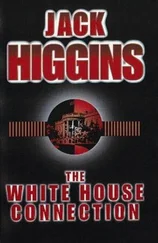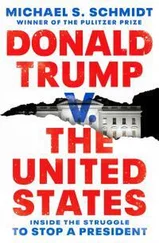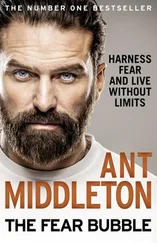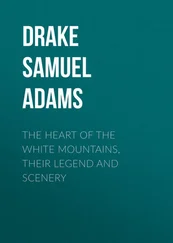Bob Woodward - Fear - Trump in the White House
Здесь есть возможность читать онлайн «Bob Woodward - Fear - Trump in the White House» весь текст электронной книги совершенно бесплатно (целиком полную версию без сокращений). В некоторых случаях можно слушать аудио, скачать через торрент в формате fb2 и присутствует краткое содержание. Город: New York, Год выпуска: 2018, ISBN: 2018, Издательство: Simon & Schuster, Жанр: Публицистика, Политика, на английском языке. Описание произведения, (предисловие) а так же отзывы посетителей доступны на портале библиотеки ЛибКат.
- Название:Fear: Trump in the White House
- Автор:
- Издательство:Simon & Schuster
- Жанр:
- Год:2018
- Город:New York
- ISBN:978-1-5011-7551-0
- Рейтинг книги:3 / 5. Голосов: 1
-
Избранное:Добавить в избранное
- Отзывы:
-
Ваша оценка:
- 60
- 1
- 2
- 3
- 4
- 5
Fear: Trump in the White House: краткое содержание, описание и аннотация
Предлагаем к чтению аннотацию, описание, краткое содержание или предисловие (зависит от того, что написал сам автор книги «Fear: Trump in the White House»). Если вы не нашли необходимую информацию о книге — напишите в комментариях, мы постараемся отыскать её.
Fear: Trump in the White House — читать онлайн бесплатно полную книгу (весь текст) целиком
Ниже представлен текст книги, разбитый по страницам. Система сохранения места последней прочитанной страницы, позволяет с удобством читать онлайн бесплатно книгу «Fear: Trump in the White House», без необходимости каждый раз заново искать на чём Вы остановились. Поставьте закладку, и сможете в любой момент перейти на страницу, на которой закончили чтение.
Интервал:
Закладка:
Trump seemed to agree that Hillary was a neoconservative.
“She’s supported every war out there,” Bannon said. “We’re just going to hammer. That’s it. Just stick to that.”
Bannon added that Trump had another advantage. He spoke in a voice that did not sound political. This was what Barack Obama had in 2008 in the primary contest against Clinton, who spoke like the trained politician she was. Her tempo was overly practiced. Even when telling the truth, she sounded like she was lying to you.
Politicians like Hillary can’t talk naturally, Bannon said. It was a mechanical way of speaking, right out of the polling and focus groups, answering the questions in political speak. It was soothing, not jarring, not from the heart or from deep conviction, but from some highly paid consultant’s talking points— not angry .
Trump said okay, you become the Chief Executive Officer of the campaign.
“I don’t want some big brouhaha story about palace intrigue,” Bannon said. “Let’s keep Manafort in as chairman. He’ll have no authority. Let me manage that.”
They agreed that Kellyanne Conway—a feisty, outspoken Republican pollster who was already helping the campaign—would be designated campaign manager.
“We’re going to put her on television every day as the female-friendly face on the thing,” Bannon proposed. “Because Kellyanne is a warrior. And she’ll just take incoming. But people like her. And that’s what we need is likability.”
In a moment of self-awareness, he added, “I’ll never be on TV.”
Conway had never run a campaign either. That made three of them—the shiny neophyte candidate, the campaign CEO and the campaign manager.
Kellyanne Conway was supervising the filming of some campaign ads that month.
“Am I paying for these people?” Trump asked her.
He complained about the camera setup. The equipment seemed old and he didn’t like the lighting. The shoot wasn’t high-definition (HD). He groused about the camera crew. “Tell them I’m not going to pay.” It was a standard line.
Later he said, “I want everyone to leave except Kellyanne.”
“Everybody tells me that I’m a much better candidate than Hillary Clinton,” he said, half-asking for her evaluation.
“Well, yes, sir. No poll necessary.” But they could do some things different. “You’re running against the most joyless candidate in presidential history. And it’s starting to feel like we are that way as well.”
“No we’re not.”
“It just feels that way. I used to watch you during the primaries, and you seemed much happier.”
“I miss the days when it was just a few of us flying around doing the rallies, meeting the voters,” Trump said.
“Those days are gone,” she acknowledged. “But in fairness to you, we should be able to replicate them to a general election strategy and process that allows you to maximize those skills and the enjoyment.”
She took a stab at candor. “You know you’re losing? But you don’t have to. I’ve looked at the polls.” CNN that day had him down five to 10 points. “There’s a path back.”
“What is it?”
She believed that he had done something without realizing it. “This fiction of electability that was sucking the lifeblood out of the Republican Party,” that somehow he could not win and was not electable.
The voters were disillusioned with Republican presidential nominees. These arguments went, “You have to get behind Mitt Romney. He’s the only one who can win. You have to support John McCain. He can win. Jeb can win. Marco can win. This one,” Trump, you, “can’t win. The people decided. I will not be fooled again,” and he had won the Republican nomination.
“You get these massive crowds where you have not erected a traditional political campaign. You have built a movement. And people feel like they’re part of it. They paid no admission. I can tell you what I see in the polling. We have two major impediments.” She said they should never do national polling, ever. “That is the foolishness of the media,” which did national polls. Winning obviously was all about the electoral college—getting the 270 electoral votes. They needed to target the right states, the roughly eight battleground states.
“People want specifics,” Conway said. It had been great when Trump released his 10-point Veterans Administration reform plan in July, or a planned five-point tax reform plan. “People want those kinds of specifics, but they need them repeated again and again.
“The second vulnerability I see is people want to make sure you can actually make good on your promises. Because if you can’t deliver, if the businessman can’t execute and deliver, you’re just another politician. And that’s who you’re not.”
It was a sales pitch, a path forward that Trump seemed to embrace.
“Do you think you can run this thing?” he asked.
“What is ‘this thing’?” she asked. “I’m running this photo shoot.”
“The campaign,” Trump said. “The whole thing. Are you willing to not see your kids for a few months?”
She accepted on the spot. “Sir, I can do that for you. You can win this race. I do not consider myself your peer. I will never address you by your first name.”
CHAPTER
3

That Sunday night, Bannon headed to work—Trump Tower in New York City. The campaign headquarters. It was his first visit, and 85 days until the presidential election.
He rode up to the fourteenth floor. The sun was still out on this August night. He expected to walk in and have a thousand or so people ask, What’s Bannon doing here? He would need a cover story.
He walked into the war room, the rapid response center, with all the TV sets.
There was one person there. To Bannon’s eyes, he was a kid.
“Who are you?” Bannon asked.
“Andy Surabian.”
“Where the fuck is everybody?”
“I don’t know,” Surabian replied. “This is like it is on every Sunday.”
“This is the campaign headquarters?”
“Yeah.”
“I mean like the place where the whole thing’s run out of?”
Yeah. Surabian pointed out Jason Miller’s office—the senior communications director—and Hope Hicks’s—the young former model who had become the campaign’s main press person and perhaps the staff member closest to Trump. Surabian was the war room director.
“Do you guys work weekends?”
Surabian said yeah again. Some worked in D.C., some guys phoned in.
Bannon tried once more. “On weekends, does this place have people in it?”
“This is about average.”
“Where the fuck is Jared? I’ve got to talk to Jared and Ivanka.” Bannon had heard that Jared Kushner, Trump’s son-in-law, was the mastermind and genius here.
Jared and Ivanka were on entertainment mogul and Democratic donor David Geffen’s $300 million yacht—one of the largest in the world—off the coast of Croatia, on vacation with Wendi Deng, a businesswoman and former wife of Rupert Murdoch.
Manafort called Bannon. He wanted to meet.
“Why don’t you come up?” Manafort said.
Where?
“The Tower.”
Bannon had to go back to the lobby to get the elevator to the residences. On the ride up, he wondered if this was the deal that Trump cut with his campaign chief. “If he’s going to toss me some penthouse in the Trump Tower, why not?” It would be better than his small place on Bryant Park.
It turned out that Manafort owned the place.
Читать дальшеИнтервал:
Закладка:
Похожие книги на «Fear: Trump in the White House»
Представляем Вашему вниманию похожие книги на «Fear: Trump in the White House» списком для выбора. Мы отобрали схожую по названию и смыслу литературу в надежде предоставить читателям больше вариантов отыскать новые, интересные, ещё непрочитанные произведения.
Обсуждение, отзывы о книге «Fear: Trump in the White House» и просто собственные мнения читателей. Оставьте ваши комментарии, напишите, что Вы думаете о произведении, его смысле или главных героях. Укажите что конкретно понравилось, а что нет, и почему Вы так считаете.












